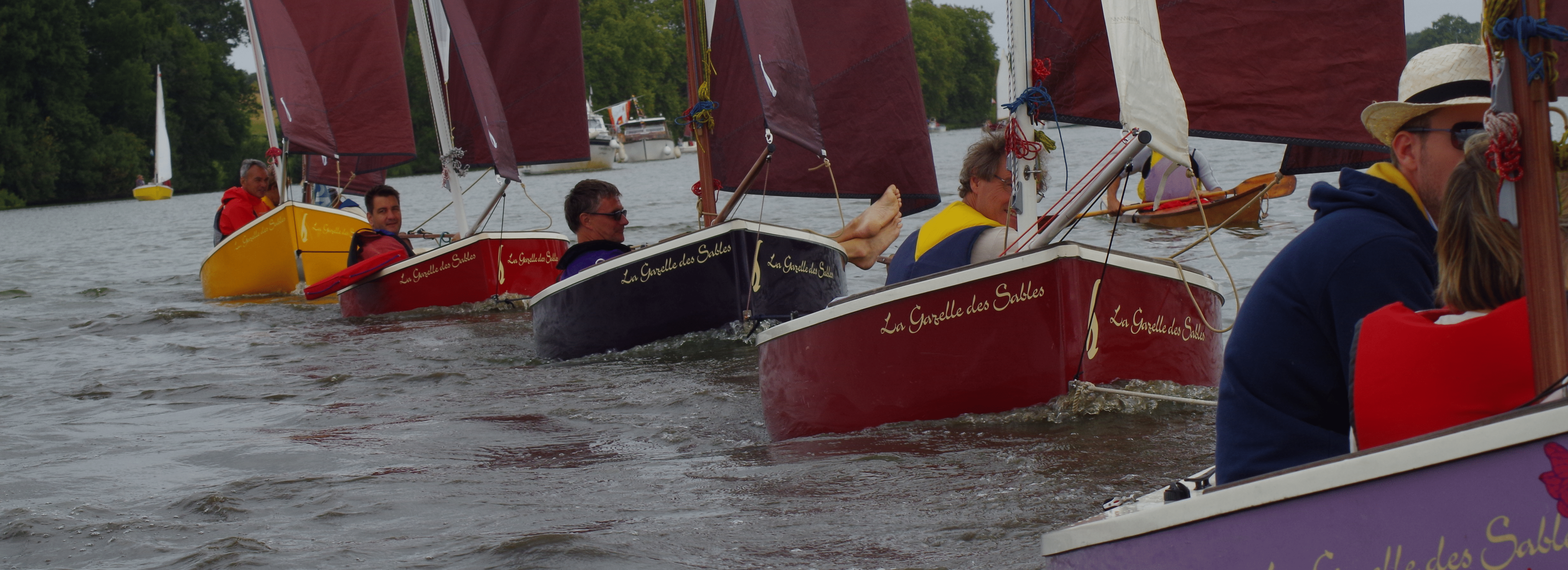The Gazelle des Sables is primarily a boat you want to take out and that’s exactly why we chose it. You take it out because it’s easy to unload, rig and roll without getting tired before sailing. You take it out because, as long as there’s a road nearby and a path to the water, it puts lots of spots within your reach. We quickly spot all the entry points and we now choose our playground according to the wind, the crew’s level or where we fancy visiting.
Our South Finistère Gazelle des Sables is rigged with three sails and cut its teeth with little children. We tested it keeling over in front of the lifeguards on purpose: the boat rights itself on its own and it’s very easy to get back in as it’s full of water that you then bail out with the bench. We also tried it without a rudder blade and realised that we could sail together by moving to the front. We practised on rough seas: you can feel that the boat floats like a cork and rides the swell without water crashing or getting inside.
These tests set our minds at ease.
Our favourite thing to do is a quick afternoon trip. Of course all the racing sailboats overtake us but it’s not unusual to catch up to them when they’ve got their keels in the air 🙂 The Gazelle Des Sables is like a magnet for nearby boats, be they big or small. The joy of pleasure boating comes mainly from chance meetings and chats on the shore: it may take you 10 minutes to rig but you need another 30 to talk about it.
Large boats are often friendly towards us and go off course to give us a wave. Sometimes a familiar sailboat appears, the Gazelle des Sables boats go a long way to get together.
For a while we’ve been going up to 4 miles off the coasts to reach the islands, in line with the category. You soon realise you’re at sea as you’re so close to the water. Beach crafts disappear and make way for cruisers and trawling nets. Once we reach the islands, we chat to other yachtsmen who can’t believe that such a small boat has managed the crossing. On the way back, we raise the large Genoa jib to compensate for the calm evening. These trips require more careful planning, safety equipment and a good understanding of currents but they’re worth the effort.
With no boom or keel, it’s obviously hard to get scores. The upside is that nothing will happen to you: no boom in your face, holes to lose your footing or rough gybing and you need to hang off the mast to capsize.
Passengers can sit comfortably on a cushion and either help with the sails or have a nap. The Gazelle des Sables may not set out to compete with racing sailboats but it sets sail on choppy seas when only the windsurfers are still standing. It could be tempting to get a bigger one for more passengers but we prefer our Gazelle des Sables which we can always take out when we want.




